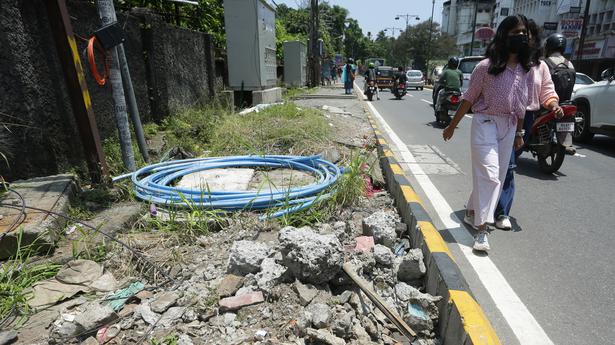
Grating replacement work gathers pace on Kochi roads
The Hindu
The crash barriers made of plastic will ensure that there is little damage to vehicles that crash into them
Faced with pedestrians suffering injuries after their legs getting trapped in drains with their gratings missing, Cochin Smart Mission Limited (CSML) has intensified the process of replacing the gratings with heavier cast-iron ones.
They would in addition be sealed using concrete, since rag pickers and others either steal the gratings, while many others remove them to dump garbage into the openings, CSML sources said.
The process has begun, among other locales, on DH Road, while this is getting over on Banerjee Road where 95% of the work to upgrade it as a smart road is over. On Banerjee Road, care was taken to build drains at a slanting or right angle, depending on the entry to the footpaths. This was because the missing gratings of drains built parallel to the road on the kerb, was resulting in pedestrians suffering injury, they added.
The gratings are being replaced by CSML’s contractors since the works have a three-year defect liability period. On Banerjee Road, old street light poles will shortly be removed, while sign boards and reflective crash barriers will be installed on medians. The crash barriers made of plastic will ensure that there is little damage to vehicles that crash into them. In addition, more cats-eye studs will be installed at junctions and more pedestrian lines drawn.
The sources said beautification of the roundabout around Mahatma Gandhi Statue in front of Rajendra Maidan and its lighting will be done shortly.













